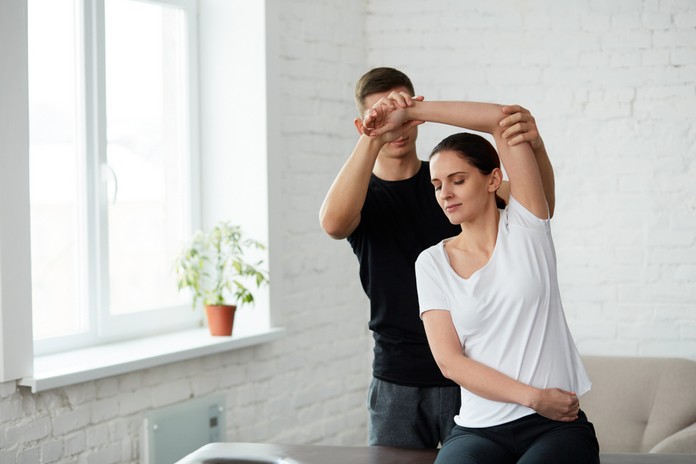Treatment Options For Different Causes of Shoulder Pain

Different types of shoulder pain can have a specific treatment based on what’s wrong with the articulation. In this section, we will briefly review the treatment options available for five different causes of shoulder pain:
- Acromioclavicular osteoarthritis: This is basically degenerative arthritis, and it is worsened by repetitive movements of the shoulders. It is often associated with an impingement syndrome, and the most important aspects of treatment are activity modifications and pain control. The latter is achieved with analgesics, and sometimes corticosteroid injections can be necessary to attain short-term pain control. When neither analgesics nor corticosteroids improve joint function, a surgical referral is required to perform a resection of the distal clavicle.
- Adhesive capsulitis: The challenge of treating adhesive capsulitis is that the treatment itself can be as painful as the problem at hand. Physical therapy is essential, with stretching exercises performed with a therapist. Like osteoarthritis, activity modification and anti-inflammatory medications are necessary to control the symptoms. After starting this treatment, doctors would continue for six weeks. If no progress is made, steroid injections are indicated with lidocaine to reduce pain and disability. After this, patients need to restart the stretching exercises, and referral for surgical procedures is considered if they are still experiencing pain after six months.
- Glenohumeral joint instability: This type of pain is usually caused by the overuse of the articulation. It can also result from an old dislocation of the joint, which leaves laxity in the joint structures. In these cases, the most critical aspects of the treatment are activity modification and a type of physical therapy focused on strengthening the rotator cuff and other muscles that stabilize the scapula. These lesions are very common in athletes and require plyometric progressions and specialized physical therapy to meet their sports requirements. Surgery is mainly considered in case of recurrent dislocations of the glenohumeral joint.
Glenohumeral osteoarthritis:
This is not as common as acromioclavicular osteoarthritis. However, it causes disability and pain, making anti-inflammatory treatment one of the most important parts of therapy. Intra-articular injections can be considered, but health authorities do not recommend them. As for physical therapy, it can also be used in these cases but should be done carefully because patients may end up feeling more pain and disability after aggressive exercises. Glenohumeral osteoarthritis often comes with other conditions, especially rheumatoid arthritis and diabetes. Thus, control of these comorbid problems is fundamental to reducing the disability. Surgical procedures with arthroscopic debridement are recommended when conservative treatment does not provide pain relief.
- Rotator cuff disorders: This is perhaps one of the most common causes of shoulder pain and usually responds to a combination of treatments. Patients with rotator cuff disorders should receive anti-inflammatory medicines or analgesics, physical therapy, and activity modifications. Treatment and the extent of physical therapy depend on the nature of the rotator cuff disorder, and the main goal is to regain the range of motion, strength, and proprioception of the affected structures. Corticosteroid injections are only considered when patients make little to no progress after several weeks of treatment. Conservative treatments are maintained for three to six months when the rotator cuff structures are intact. In case of minor rotator cuff tears, nonoperative treatment is recommended for 12 weeks, and patients are advised to undergo surgery if they still do not see any progress. When rotator cuff tears are large and cause severe pain, surgical treatment can be necessary right away to decompress the articulation and repair the affected ligaments.
